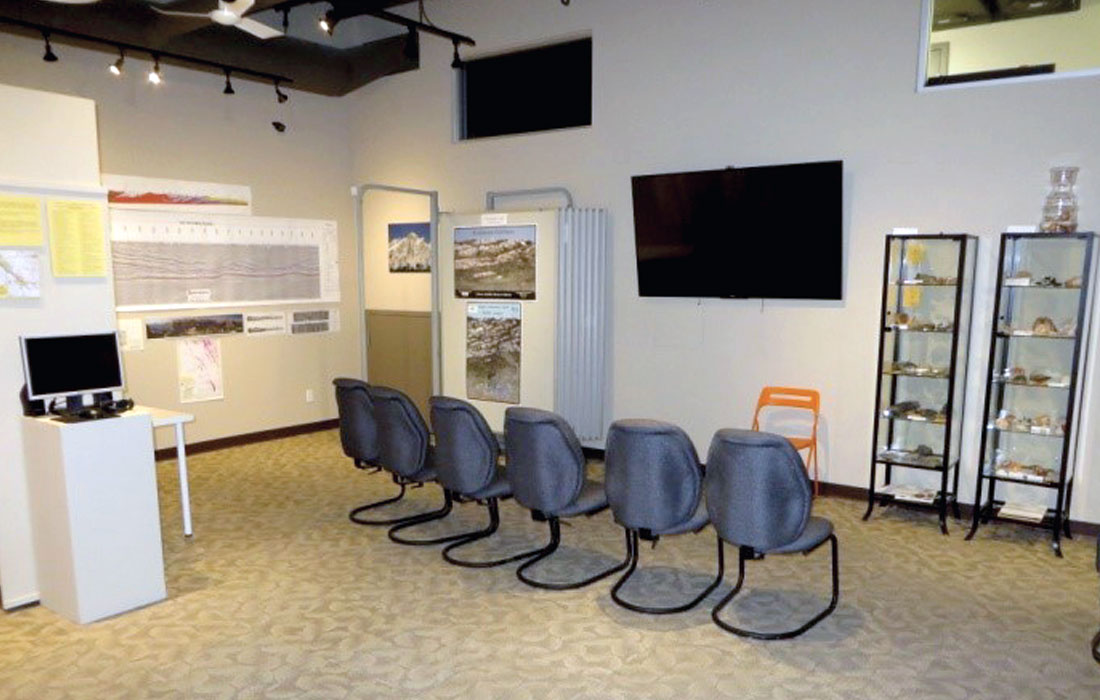The Canadian Rockies Earth Science Resource Centre (CRESRC) is a new geoscience facility located in Canmore, Alberta (see Figures 1 and 2). This facility was created to give geoscience information about the Canadian Rockies and to do geoscience outreach and programming for junior / senior high school and university students, new industry employees and also for the general public (locals, tourists, etc.). CRESRC is interested in presenting geoscience material focused mainly on information about the geology of the Canadian Rockies and nearby subsurface structures including the use of geophysical data. The facility will also include topical issues in the Western Canada Sedimentary Basin, and to a much lesser extent, to the rest of Canada and the world.

CRESRC is a ~2000 square foot facility located at 111 829 10th St., Canmore. The facility includes a reception area, small gift-shop area, a geoscience library, a ~700 sq ft exhibition space, 2 bathrooms (1 wheelchair accessible), an office and a small conference room. Empty space for CRESRC was purchased in October 2013. The interior design and building construction work was completed in March 2015. A number of displays were acquired or created and the facility was opened to the public on June 26, 2015 onward.

In the exhibition space, the key exhibit is the Operation Bow Athabasca exhibit (in English and French) which is a tribute to the Geological Survey of Canada’s surface geological work in the Canadian Rockies done in the mid-1960s (see Figure 3). There is also a microscope and a selection of rocks, fossils and core samples on display. The facility has a 70 inch TV monitor to show pictures/videos of the geology of the area on an on-going basis and to give presentations to groups up to ~40 people, as needed.
A major project at CRESRC is to continue the documentation of some 2000 core samples from Imperial Oil. All the samples have been photographed, numbered and entered into a spreadsheet. The next step is to pick out 25 – 50 samples for further detailed documentation and display. The display will include information about coring methods and the uses of core samples along with some actual coring bits. It is intended to eventually have some of this information on our website.

CRESRC has staff available to give an introductory tour of the exhibit area to visitors and to answer questions.
Please see our website (www.CRESRC.ca) for contact information, hours of operation, past and upcoming events and other details. Please come and visit!











Join the Conversation
Interested in starting, or contributing to a conversation about an article or issue of the RECORDER? Join our CSEG LinkedIn Group.
Share This Article